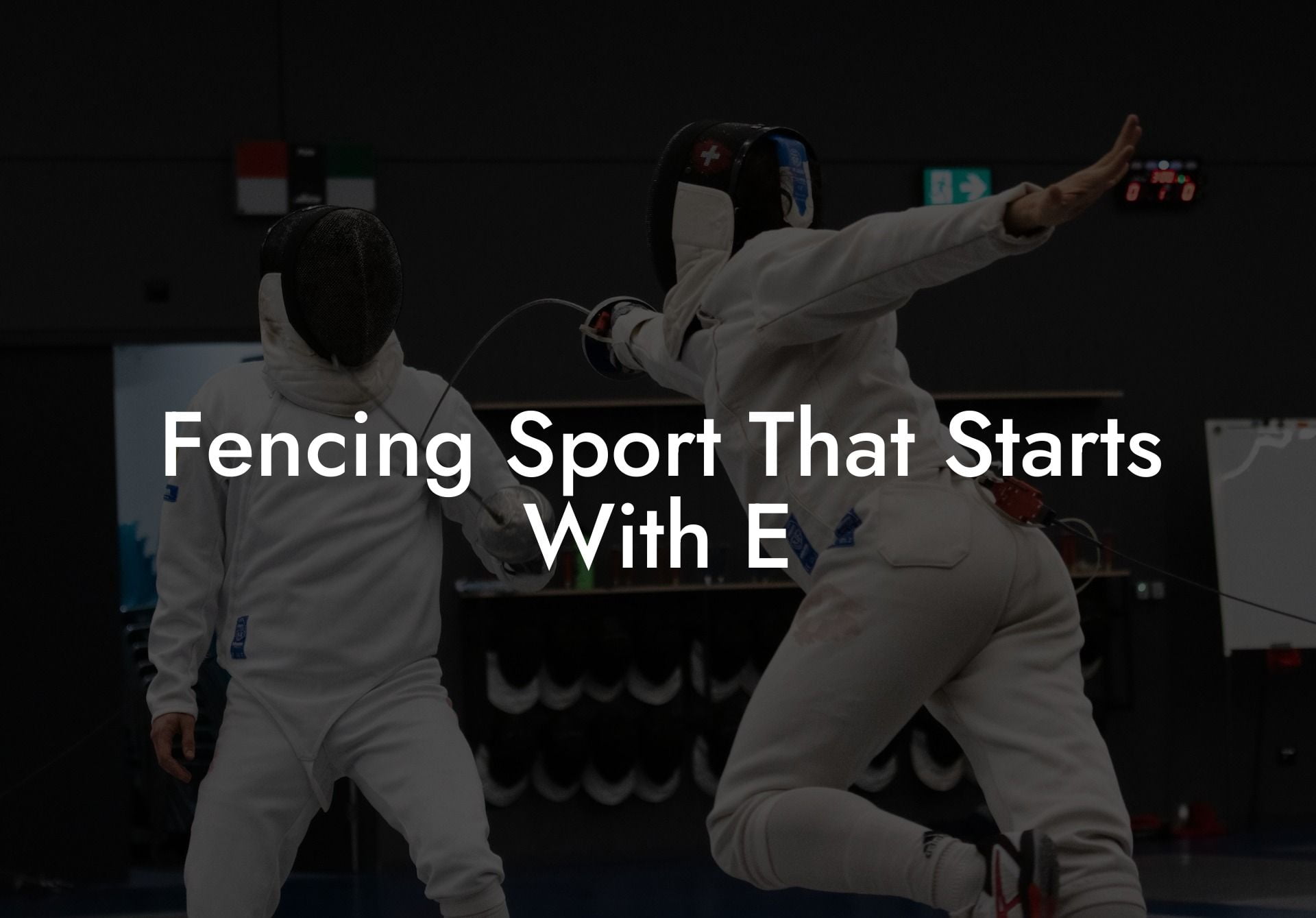Are you intrigued by the elegant and strategic sport of fencing? You're not alone! This fascinating discipline, which has its roots in European swordsmanship, is a unique blend of athleticism, strategy, and artistry. In this blog post, we will explore a branch of fencing that starts with the letter "E" - épée fencing. We'll dive deep into the history, techniques, and equipment unique to épée, as well as share a realistic example of an épée bout, so you can fully appreciate what sets it apart from the other fencing styles. Let's embark on this exciting journey together!
Fencing Sport That Starts With E Table of Contents
History and Background of Épée Fencing
Épée fencing is one of the three disciplines of modern competitive fencing, alongside foil and sabre. It traces its origins back to the 19th century, when French fencers sought to create a more realistic form of sword combat that would prioritize both precision and power and be applicable in a real-life duel. The word "épée" literally means "sword" in French, emphasizing the weapon's central role in this fencing discipline.
What Sets Épée Apart?
Unlike foil and sabre, épée fencers can target any part of the body. There is no "right of way" rule in épée fencing, meaning that, if both fencers hit each other simultaneously, both will earn a point. This encourages a more cautious and tactical approach to the bout, as fencers must carefully defend themselves while seeking opportunities to attack.
Épée Fencing Equipment
As part of our guide to fencing, let's take a look at the specific equipment used in épée fencing.
Épée Sword
• Longer and heavier than foil and sabre, the épée sword has a v-shaped blade with a triangular cross-section.
• The sword features a large bell-shaped guard that protects the hand from being hit.
• The tip of the sword has a button with a spring-loaded mechanism. When you hit an opponent with sufficient pressure, the tip compresses, registering a hit.
Protective Gear
• Fencers wear a mask with a metal mesh faceguard and a bib made of strong fabric to protect the head and neck.
• A fencing jacket is obligatory, providing robust protection for the torso and arms.
• A plastron, or an underarm protector, is worn beneath the jacket on the weapon-carrying arm.
• A chest protector is required for women and optional for men.
• Fencers also wear a glove on their weapon-hand, featuring a long cuff to protect the forearm.
Fencing Sport That Starts With E Example:
Consider a competitive épée bout between two experienced fencers. The match begins with cautious footwork and probing efforts to find an opening in the opponent's defense. Both fencers use quick, subtle movements to test each other's reactions, looking for weaknesses they can exploit. Fencer A makes a feint, or a deceptive move, distracting Fencer B and creating an opening to score on the torso. However, Fencer B swiftly recovers, and the two continue their strategic dance.
As the bout reaches its critical point, sweat pouring down their faces, Fencer A launches an unexpected, explosive attack, lunging forward with incredible speed. Fencer B quickly parries the attack, redirecting the épée away from his body. In that split second, Fencer B counterattacks with a flick to Fencer A's arm, scoring the decisive touch and claiming victory. The bout was won through a combination of skill, strategy, and intense focus, showcasing the captivating nature of épée fencing.
If the world of épée fencing has piqued your interest, why not give it a try? Join a local fencing club, immerse yourself in this fascinating sport, and unleash your inner swashbuckler! Don't forget to explore our other guides on Anchorage Fencing Club for more information on various fencing techniques and equipment. And if you enjoyed this article, be sure to share it with your friends and fellow fencing enthusiasts so that they, too, can discover the thrilling sport that starts with "E"!













